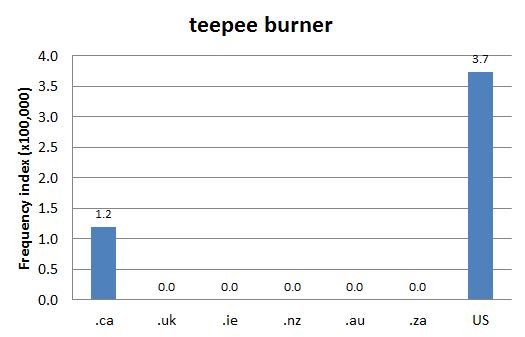DCHP-2
beehive burner DCHP-2 (October 2016)
n. — British Columbia, Industry
an incinerator used by sawmills to burn sawdust and scrap wood (see Image 1).
Type: 5. Frequency — The term is used almost exclusively in Canada (see Chart 1), where the term is a British Columbia regionalism with some currency in the Yukon (see Chart 2). In the US, the preferred term appears to be teepee burner (see Chart 3). The terms beehive burner, teepee burner, and also wigwam burner refer to the shape of the incinerator (see Image 1).
See also COD-2, which marks the term "Cdn (BC").See also: wigwam burner
References:
Images:

Image 1: A beehive burner. Source: Wikimedia Commons. Photo: Visitor7
Chart 1: Internet Domain Search, 5 Nov. 2013
Chart 2: Regional Domain Search, 15 Jan. 2016
Chart 3: Internet Domain Search, 5 Nov. 2013


